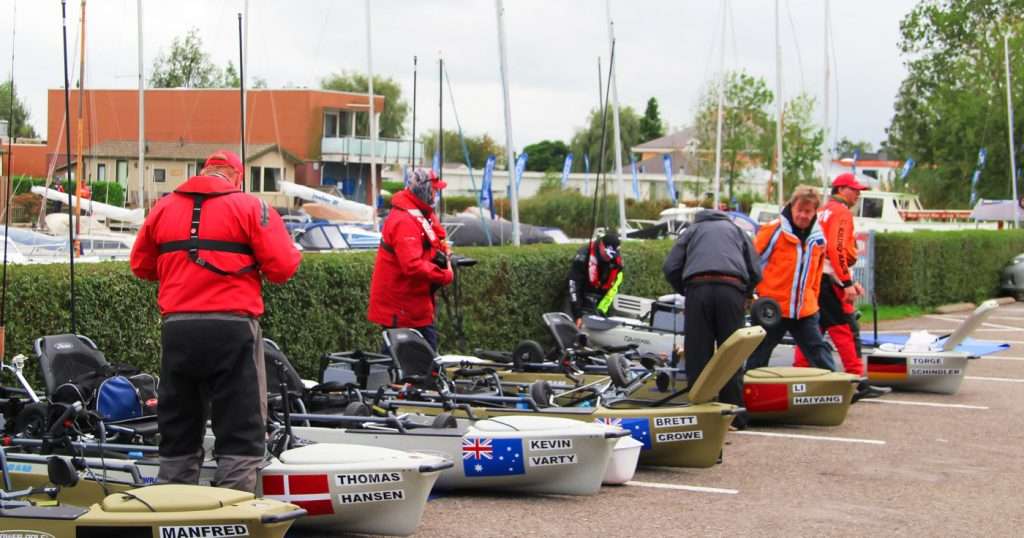The most important part of choosing a kayak rod holder is choosing how to mount it to your kayak. If not mounted properly, even the best rod holders can fall when hit by a large fish. Consider the similar example of mounting a flat screen wall mounted TV.
If you buy a top of the line TV and wall mount it into sheetrock with whatever nails you can find in your garage, the TV is likely to fall. It is not until the TV is mounted properly that you can gain the full benefit of the price you paid for the TV. Likewise, the rod holder’s battle against big strikes is won in determining where and how to mount it.
Where to Mount the Rod Holder
As far as mounting the rod holder to the kayak, most kayaks will present you with two options:
- Hard Mount the rod holder to the kayak – Hard mounting the base to the kayak with screws, locknuts, and washers is the most reliable method. However, sometimes preexisting factory set bases or tracks can impede.
- Mounting to factory installed metal tracks – Before we get started on option two, you should notice I said factory installed metal tracks. This means the tracks are either mounted into brass inserts or have been mounted with nuts and bolts. I do not recommend aftermarket tracks for holding trolling rod holders because aftermarket track will most likely be installed with self-tapping screws. Unless the tracks are backed with nuts or a plate, do not use aftermarket tracks for rod holder mounting. (Cue aftermarket track excuses) This is where we all say, “But tracks allow me to move my rod holder…my tracks are super strong…but everyone uses tracks these days…” Why we feel that the ability to slide a rod holder a few inches in a track is an extreme benefit is beyond me…but I digress. It is my personal option that I won’t mount my TV to sheetrock with a tiny nail, nor will I mount my rod holder to an aftermarket track without a backing plate.
How to Mount the Rod Holder
Well, option one is easy. Hard mount the rod holder to your kayak with locknuts, screws, and washers. There is not much need for further information there. However, the question of “how to mount a BTB rod holder to a factory installed track?” is a little more difficult.
The first step is to find a track adaptor. Essentially, this is a track nut or pre-fitted piece that allows a rod holder base to fit into the track. There are many different options from many different brands. Here are some tips:
- Number of attachment points – If you can install it with a single attachment to point whether it is a track bolt or track nut, it is not safe for trolling. I repeat, one attachment point will not work. We are looking for a base that allows attachment security to the kayak track at more than one attachment point. Refer back to the TV example if this is still giving you a hard time.
- Locking and Unlocking Process – If you can simply just spin the mount on and off to lock or unlock it, then a large fish is probably strong enough to do the same. We are looking for something that can’t be loosened or tightened with accidental movement of an unintentional fish strike.
Choosing Your Rod Holder
Now, and only now that you have decided how to mount your rod holder, can we move on to choosing which good looking flat screen TV you want! Or, you know, choosing a specific rod holder. To over simplify the choice, you have two choices:
- A Ball Mount – A ball mount connection is essentially a rod holder connected to a ball that connects to a base that squeezes the ball from moving and thus holds it in place. My experience shows that ball mounts usually get a good case of the spins (spinning horizontally or collapsing vertically on the ball) when trolling with a ball base.
- A Shaft and Socket – A shaft and socket connection point is the real winner here. Consider the mechanics of a seatbelt. The seatbelt is latched into the buckle at a connection point where a locking mechanism from the socket goes through the shaft to hold it in place. You wouldn’t trust your seatbelt to hold you in as a ball grip, would you?
Parting Tips
With the essentials of picking a rod holder and mounting options covered, I will leave you with my last tip. Get a rod holder with a gimbal. A gimbal is a mechanism of keeping an instrument horizontal in a moving vessel. In our case, it is a notch on the inside of the rod holder that keeps your rod from rotating while inside the rod holder. You don’t want your rod spinning around; spinning can cause you to miss a strike or cause an equipment failure.
As a BTB kayak angler, the recent surge in production of multiple big water kayaks has been fun to watch! Keep these tips in mind and remember, just like kayaks, rod holders are also designed for and appeal to the offshore, beyond the breaker, kayak fishermen. You wouldn’t settle for a kayak that wasn’t adequate for BTB fishing. So why settle for a rod holder that is not up to the task of BTB?

